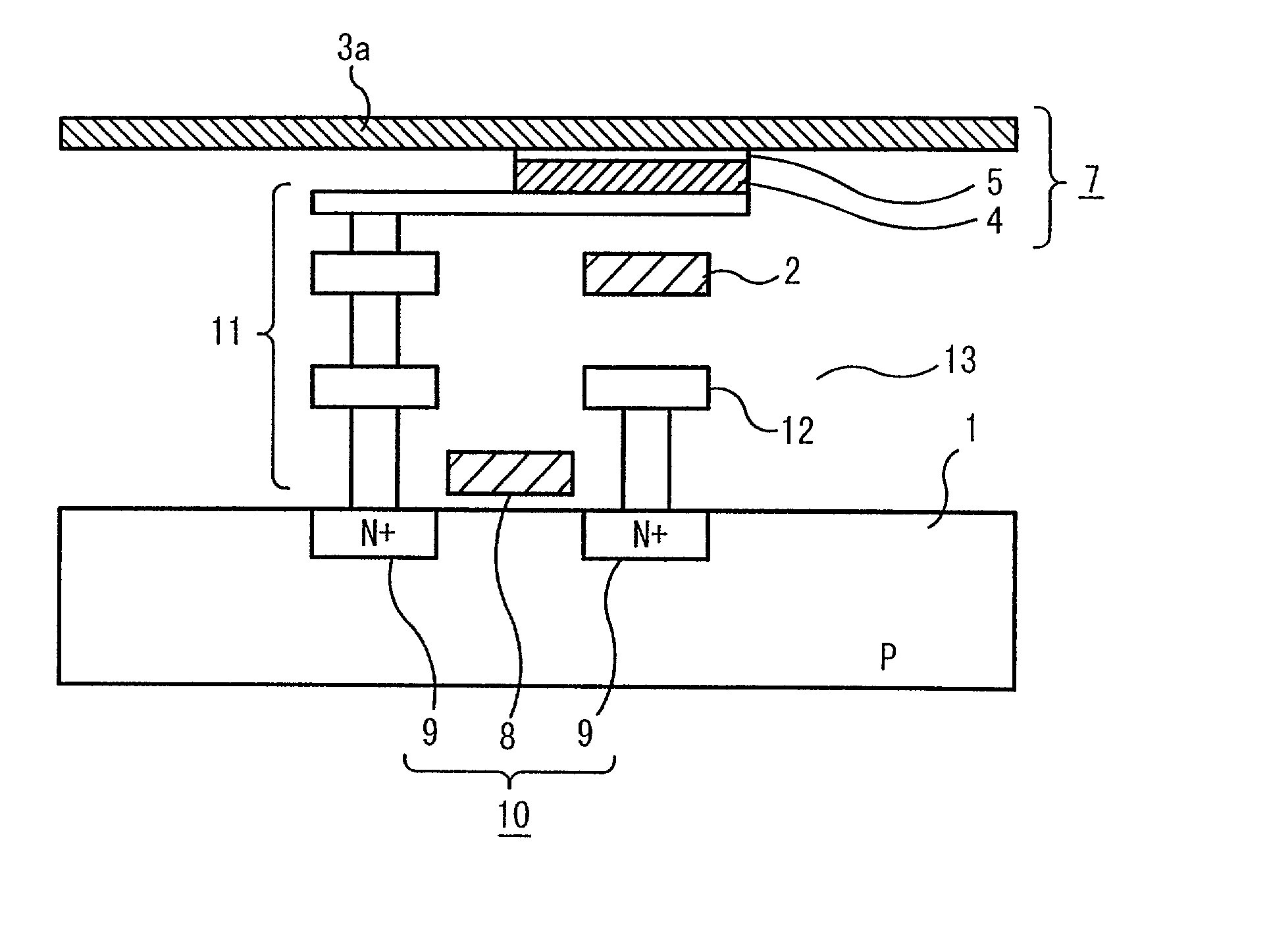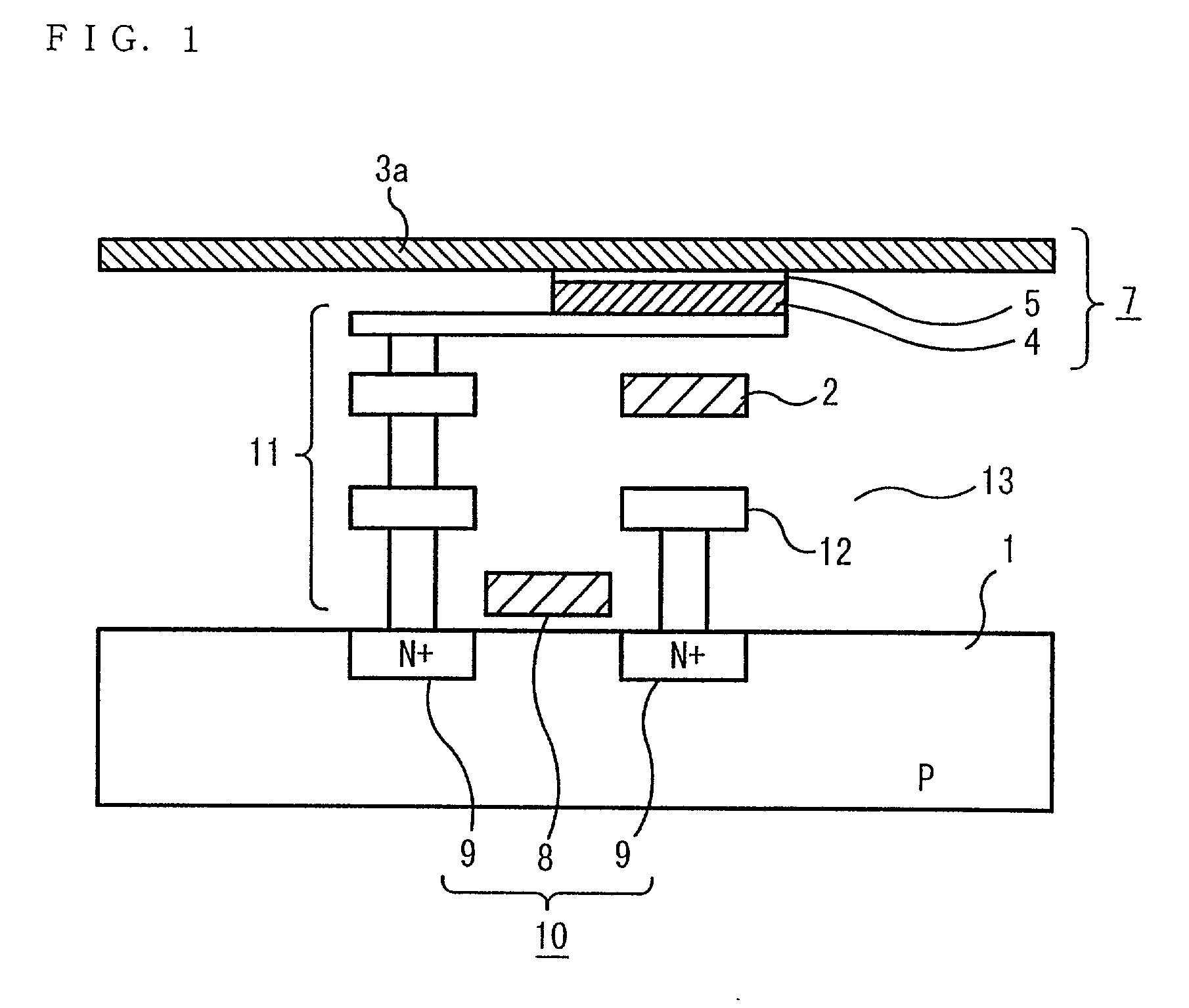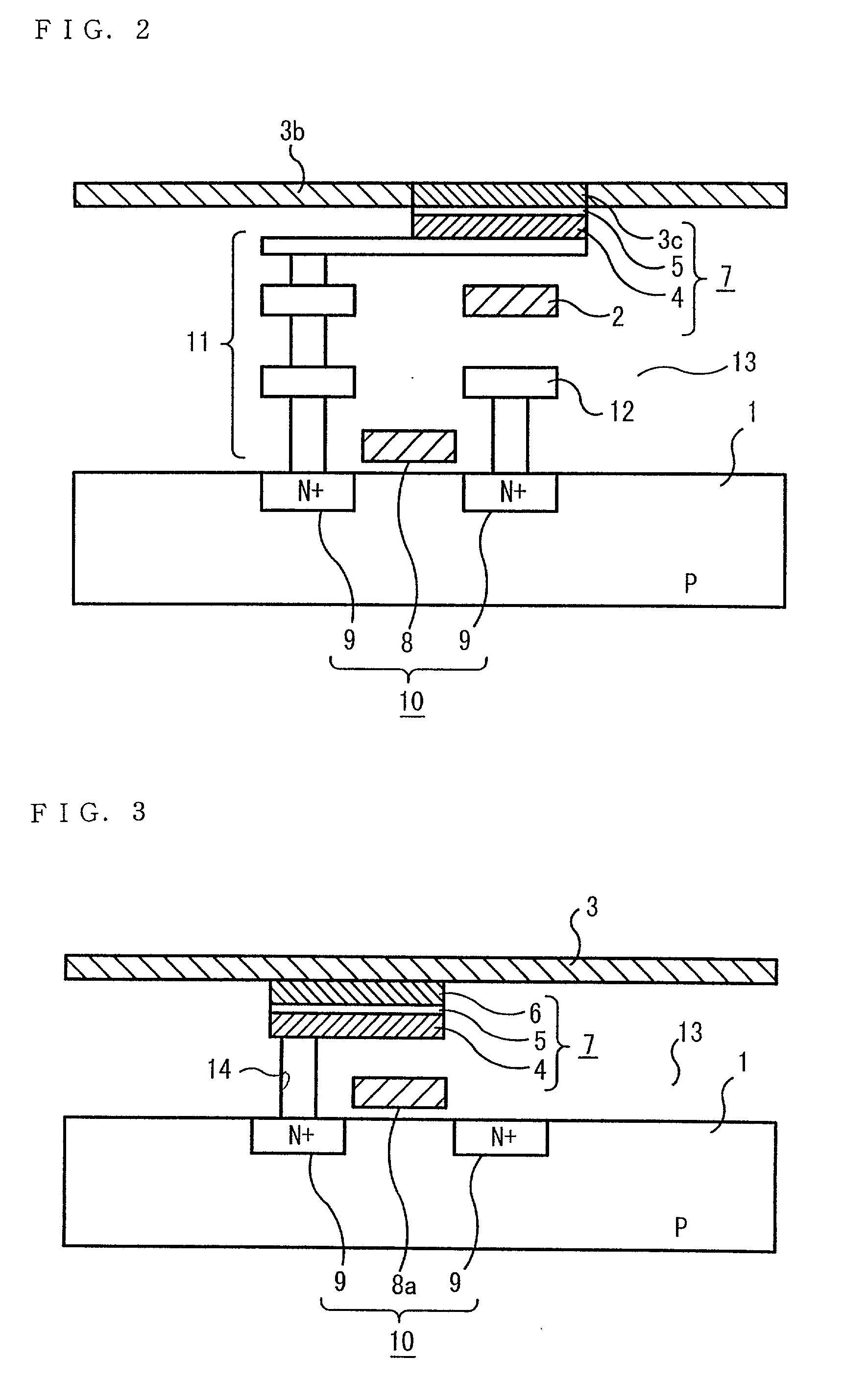Magnetic random-access memory
a random access and memory technology, applied in the field of magnetic random access memory, can solve the problems of difficult to reduce the area of each cell, complicated manufacturing process, etc., and achieve the effect of increasing the degree of freedom in the design of device pattern and higher integration level
- Summary
- Abstract
- Description
- Claims
- Application Information
AI Technical Summary
Benefits of technology
Problems solved by technology
Method used
Image
Examples
first embodiment
[0050] FIG. 1 is a cross-sectional diagram showing the construction of an MRAM device according to a first embodiment of the invention.
[0051] Referring to FIG. 1, the MRAM device comprises a p-type semiconductor substrate 1 (hereinafter referred to simply as the substrate 1), on which parallel write word lines 2 serving as first word lines and parallel bit lines 3a are arranged at specific intervals, the write word lines 2 and the bit lines 3a intersecting one another. A free-spin layer 4 serving as a first magnetic substance layer and a thin insulator layer 5 stacked on top of the free-spin layer 4 are located in each area of intersection of the write word lines 2 and the bit lines 3a. The bit lines 3a are made of ferromagnetic metal, such as cobalt, nickel or iron. The direction of electron spin in the individual bit lines 3a is fixed to the direction of their length by previously subjecting them to a strong magnetic field or applying other form of treatment. TMR elements 7 are fo...
second embodiment
[0058] While the aforementioned first embodiment requires the separately formed write word lines 2 and readout word lines 8, an MRAM device of a second embodiment employs word lines which are used for performing both data read and write operations.
[0059] Referring to FIG. 3, the MRAM device has common word lines 8a which perform the read and write operations and serve as gate electrodes of individual access transistors 10. TMR elements 7 are arranged at individual intersections of bit lines 3 formed in an upper layer and the common word lines 8a, each TMR element 7 having a sandwich structure comprising a fixed-spin layer 6 serving as a second magnetic substance layer, an insulator layer 5 and a free-spin layer 4 from top to bottom. Designated by the numeral 14 is a contact hole used for connecting the free-spin layer 4 to one of source / drain regions 9.
[0060] In this example, a dedicated magnetic substance layer in which the spin direction is fixed to the bit line direction is used ...
third embodiment
[0069] While the aforementioned second embodiment employs the common word lines 8a which perform both the data read and write operations, it might be impossible to implement this kind of common word lines 8a combining the functions of the write word lines 2 and the readout word lines 8 in modern hybrid design in which the MRAM device is integrated with a multilayer interconnection logic device, for instance. Since interconnection layers are stacked so higher than the substrate 1 in the modern multilayer interconnection logic device, there is no alternative but to form the TMR element 7 at a position much higher than the readout word line 8 of the access transistor 10, making it impossible to combine the write word line 2 and the readout word line 8 into a common word line.
[0070] FIG. 7 shows the construction of an MRAM device according to a third embodiment of the invention, in which a write word line 2 and a readout word line 8 are electrically connected to each other to set them a...
PUM
 Login to View More
Login to View More Abstract
Description
Claims
Application Information
 Login to View More
Login to View More - R&D
- Intellectual Property
- Life Sciences
- Materials
- Tech Scout
- Unparalleled Data Quality
- Higher Quality Content
- 60% Fewer Hallucinations
Browse by: Latest US Patents, China's latest patents, Technical Efficacy Thesaurus, Application Domain, Technology Topic, Popular Technical Reports.
© 2025 PatSnap. All rights reserved.Legal|Privacy policy|Modern Slavery Act Transparency Statement|Sitemap|About US| Contact US: help@patsnap.com



